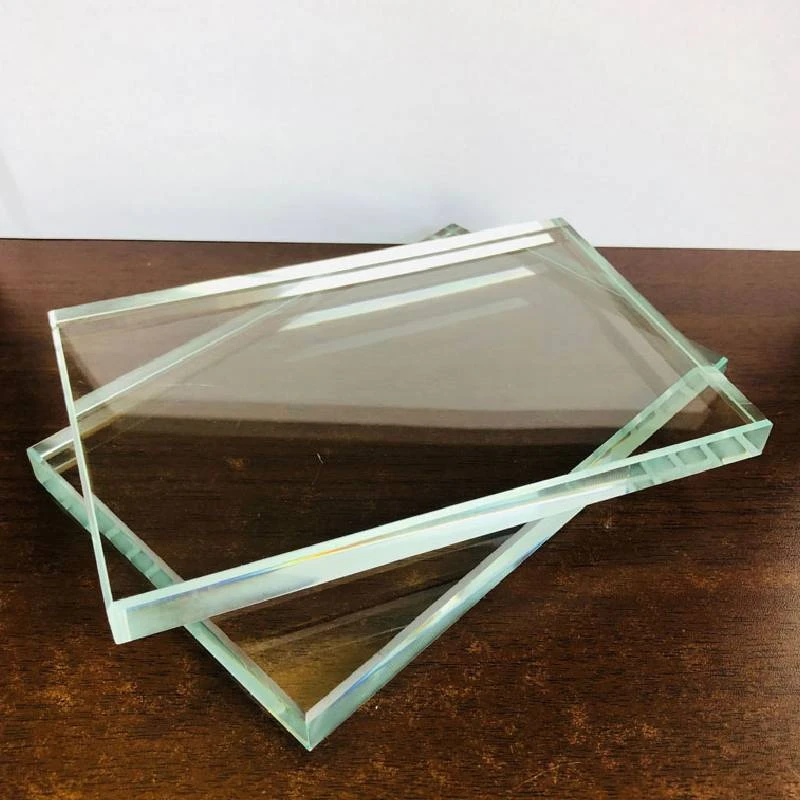Thermal Tempering of Glass An Essential Process for Strength and Safety
Thermal tempering, a crucial technique in glass manufacturing, involves subjecting glass to controlled heating and cooling processes to enhance its strength and safety. This method not only improves the mechanical properties of glass but also its resistance to thermal shock, making it suitable for a wide range of applications from architectural design to automotive uses.
Understanding the Process
The thermal tempering process begins with heating the glass to approximately 600–700 degrees Celsius (about 1112–1292 degrees Fahrenheit). This elevated temperature allows the glass to reach a state where its internal structure can be altered. Once the glass is uniformly heated, it is rapidly cooled, or quenched, using jets of cold air. This rapid cooling causes the outer surfaces of the glass to solidify quickly, while the inner part remains relatively hot and in a more gradual cooling phase. This process creates a compressive stress on the surface of the glass and tensile stress in the center, resulting in a material that is significantly stronger than its non-tempered counterpart.
Why Temper Glass?
Tempered glass is notably more robust than standard glass, which means it can withstand greater impacts and pressure. This added strength makes it an ideal choice for high-stress applications, such as shower doors, glass partitions, and facades in buildings. One of the most critical safety features of tempered glass is that, upon breaking, it shatters into small, blunt pieces rather than sharp shards, significantly reducing the risk of injury. This characteristic is particularly beneficial in environments where safety is a paramount concern, making tempered glass a preferred material in many sectors.
Applications of Tempered Glass
thermal tempering of glass
The applications of thermal tempered glass are vast. In architecture, it is commonly used for windows, doors, and skylights due to its aesthetic appeal and structural integrity. In the automotive industry, tempered glass is utilized in the manufacture of car windows and windshields, where safety and durability are essential. The use of tempered glass extends to the appliance industry as well, where it is featured in cooktops, oven doors, and other high-heat applications.
In addition to structural applications, tempered glass is also employed in decorative contexts. Artists and designers often opt for tempered glass in custom installations, sculptures, and furnishings, giving them the freedom to create unique forms and designs without compromising on safety.
Environmental Considerations
The thermal tempering process is energy-intensive, necessitating a significant amount of heat. However, improvements in technology have led to more environmentally friendly methods of tempering that minimize energy use while still maintaining the quality and safety standards required of tempered glass. Moreover, tempered glass is 100% recyclable, making it a sustainable choice for modern construction and manufacturing.
Conclusion
In summary, thermal tempering of glass is a vital process that enhances the material's strength, safety, and durability. Its applications are widespread, spanning various industries such as architecture, automotive, and design. As we continue to innovate and improve the tempering process, tempered glass will remain a foundational material in creating safe, durable, and aesthetically pleasing products. This ongoing evolution is crucial not only for meeting the demands of modern design but also for ensuring that safety standards continue to be upheld in the face of ever-changing technological advancements. Whether in a skyscraper or a vehicle, the importance of tempered glass in our daily lives cannot be overstated.
 Afrikaans
Afrikaans  Albanian
Albanian  Amharic
Amharic  Arabic
Arabic  Armenian
Armenian  Azerbaijani
Azerbaijani  Basque
Basque  Belarusian
Belarusian  Bengali
Bengali  Bosnian
Bosnian  Bulgarian
Bulgarian  Catalan
Catalan  Cebuano
Cebuano  Corsican
Corsican  Croatian
Croatian  Czech
Czech  Danish
Danish  Dutch
Dutch  English
English  Esperanto
Esperanto  Estonian
Estonian  Finnish
Finnish  French
French  Frisian
Frisian  Galician
Galician  Georgian
Georgian  German
German  Greek
Greek  Gujarati
Gujarati  Haitian Creole
Haitian Creole  hausa
hausa  hawaiian
hawaiian  Hebrew
Hebrew  Hindi
Hindi  Miao
Miao  Hungarian
Hungarian  Icelandic
Icelandic  igbo
igbo  Indonesian
Indonesian  irish
irish  Italian
Italian  Japanese
Japanese  Javanese
Javanese  Kannada
Kannada  kazakh
kazakh  Khmer
Khmer  Rwandese
Rwandese  Korean
Korean  Kurdish
Kurdish  Kyrgyz
Kyrgyz  Lao
Lao  Latin
Latin  Latvian
Latvian  Lithuanian
Lithuanian  Luxembourgish
Luxembourgish  Macedonian
Macedonian  Malgashi
Malgashi  Malay
Malay  Malayalam
Malayalam  Maltese
Maltese  Maori
Maori  Marathi
Marathi  Mongolian
Mongolian  Myanmar
Myanmar  Nepali
Nepali  Norwegian
Norwegian  Norwegian
Norwegian  Occitan
Occitan  Pashto
Pashto  Persian
Persian  Polish
Polish  Portuguese
Portuguese  Punjabi
Punjabi  Romanian
Romanian  Russian
Russian  Samoan
Samoan  Scottish Gaelic
Scottish Gaelic  Serbian
Serbian  Sesotho
Sesotho  Shona
Shona  Sindhi
Sindhi  Sinhala
Sinhala  Slovak
Slovak  Slovenian
Slovenian  Somali
Somali  Spanish
Spanish  Sundanese
Sundanese  Swahili
Swahili  Swedish
Swedish  Tagalog
Tagalog  Tajik
Tajik  Tamil
Tamil  Tatar
Tatar  Telugu
Telugu  Thai
Thai  Turkish
Turkish  Turkmen
Turkmen  Ukrainian
Ukrainian  Urdu
Urdu  Uighur
Uighur  Uzbek
Uzbek  Vietnamese
Vietnamese  Welsh
Welsh  Bantu
Bantu  Yiddish
Yiddish  Yoruba
Yoruba  Zulu
Zulu 

